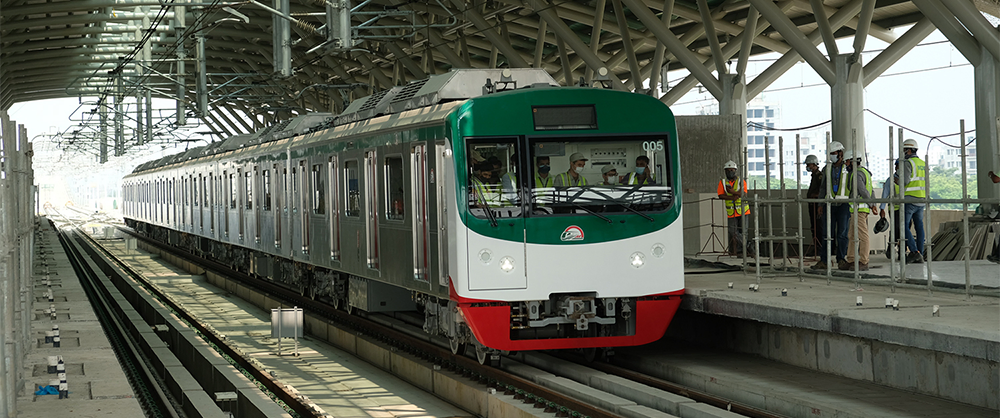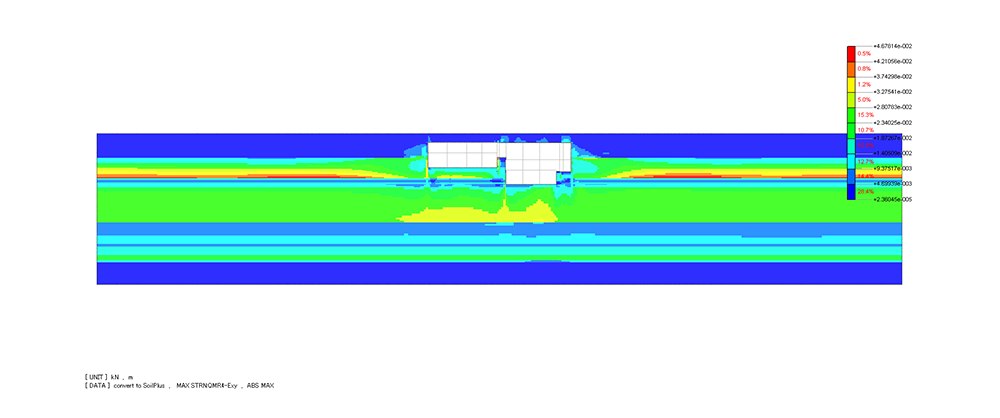
Railway Railway
Nippon Koei and Nippon Koei Mobility (NK Mobi) provide consulting services for railway projects that enable mass transportation with less energy consumption. Our services encompass intercity and urban railways. For intercity railways, we offer rehabilitation of conventional railway for passengers and freight, development of high-speed railway, and dedicated freight railway services. For urban railways, we offer Mass Rapid Transit (MRT), Monorail, Automated Guideway Transit (AGT) and new transportation modes with Transit-Oriented Development (TOD). These various railways can be game-changers for the regions or countries, addressing social issues such as air pollution related to traffic congestions, regional disparities between urban and rural areas.
Our technical solutions are provided through various phases such as study, planning, design, tender assistance, construction supervision, and operation and maintenance (O&M).
We have various experts providing solutions and working daily on railway projects. Our experts specialize in Project Management, Demand Forecast, Railway Track Alignment, Train Operation, Financial/Economic Analysis, Social Environment, Civil Engineering, Architecture, Signaling & Telecommunication, Electricity, Rolling Stocks, Contract, and more.

Engineering Services
In developing countries and large cities in emerging economies, urban railroads have not kept pace with urban development, causing severe traffic congestion, which is a major environmental and economic problem. We support urban development in developing countries by drafting comprehensive transportation plans, planning urban railroad lines, and examining transportation modes according to urban needs and topographical conditions. The real pleasure of our work is to draw full-scale railroads on the canvas of cities.
In developing and emerging countries, demand for transportation between cities is increasing as nations develop. We are also involved in the planning of high-speed railroads and freight railroads. We are also involved in supporting railroads in war-affected and neighboring countries.
We also incorporate digital technology and are actively challenging new areas such as railroad planning and evaluation using transportation big data, for example.
We provide design, bidding support, and construction supervision services for railroad facilities (stations, tunnels, tracks, rail yards, etc.) in developing countries. We conduct basic and detailed design after studying local conditions and constraints and conducting necessary studies. In the bidding support phase, we prepare bid documents and evaluate responsive bids to ensure a fair and transparent bidding process. Furthermore, during the construction supervision phase, we supervise the progress and quality of the construction work and ensure that it is carried out as planned. The technical fields required for railroad projects are very diverse, and our team consists of many specialists. Based on our expertise and experience, we engage in comprehensive project management in each field and at each project stage.
A railroad is one large system consisting of a wide variety of subsystems such as rolling stock, electric power, overhead wires, signals, communications, station facilities (automatic ticket gates), and platform doors (fences). In order to build up this huge system, we propose the appropriate combination of subsystems according to the actual conditions of the target country or city, and provide integration services in cooperation with each subsystem and civil engineering/building facilities during the design and construction phases.
For some target countries and cities, there are new technologies and facilities that are being introduced for the first time. Part of the service we provide is to explain whether the new technology and facilities we propose at the planning and design stage are optimal for railroad operations and whether they provide safety and security for passengers, based on technical perspectives and the status of their introduction on other lines, and to provide practical proof through construction, training, operation, and maintenance. The best part of the railroad systems field is the integration of different technical fields and different subsystems into a single system called a railroad.
Urban railroads are undergoing intermodal transit plans and large-scale reconstruction of existing rail facilities to improve rail transit service. Underground railroad structures are complex structural models with special conditions such as integrated structures with new and existing structures, ground improvement associated with new structures, and multi-mass point system structural models. In seismic design, appropriate structural models must be proposed that take into account the effects of rocking between structures and the interaction of new and existing structures.
In the seismic design of complex underground structural models, the Railway Design Office performs dynamic 2-dimensional FEM analysis using the GHE-S model of soil deformation characteristics and compares it with the response displacement method based on static nonlinear analysis to propose the validity of the structural model, optimal design methods, and issues to be considered during construction.



